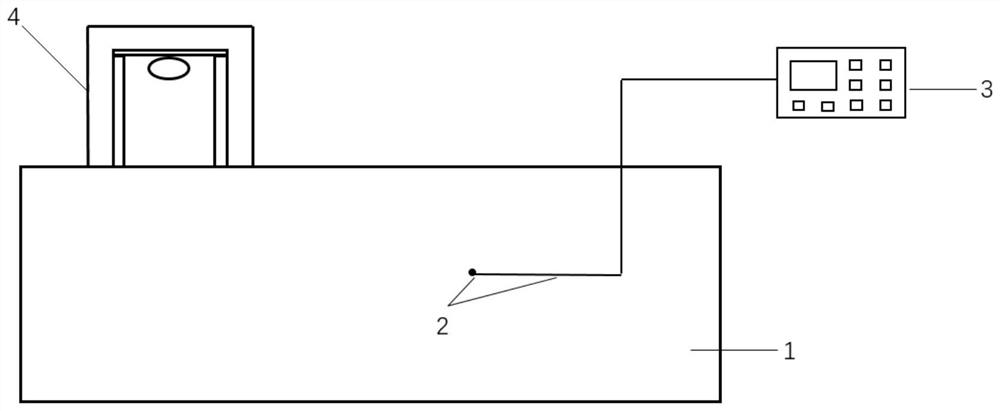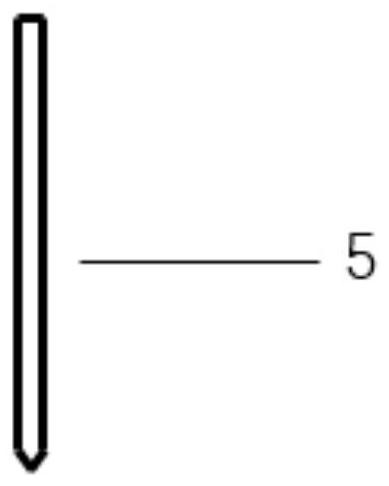A Method for Evaluating the Early Freezing Performance of Concrete Using Transient Temperature Field Analysis
A transient temperature field, analysis and evaluation technology, applied in design optimization/simulation and other directions, can solve the problems of difficulty in timely and accurate evaluation of early freezing damage of negative temperature concrete, poor quality of construction projects in winter, and achieve fast and reliable acquisition methods. Guaranteed construction quality and low operational difficulty
- Summary
- Abstract
- Description
- Claims
- Application Information
AI Technical Summary
Problems solved by technology
Method used
Image
Examples
specific Embodiment approach 1
[0044] Specific implementation mode one: combine figure 1 , figure 2 , image 3 , Figure 4 , Figure 5 , Figure 6 , Figure 7 , Figure 8 , Figure 9 and Figure 10 To illustrate this embodiment, select two adjacent typical areas in the same part of the winter concrete project 1, and name them respectively as concrete area I and concrete area II, and obtain the temperature from the concrete area I to the positive temperature and ice-free state through heat conservation calculation. The rise time Δt, according to the calculated temperature rise time Δt, the concrete area I is heated, and the penetration resistance test is performed on the heated concrete area I and the unheated concrete area II respectively, and the penetration depth is compared to evaluate Early freezing performance of concrete.
[0045] Further, when the concrete project 1 is poured, the temperature sensor 2 is embedded in the area other than the concrete area I and the concrete area II as a tempe...
specific Embodiment approach 2
[0055] Specific implementation mode two: combination figure 1 , figure 2 , image 3 , Figure 4 , Figure 5 , Figure 6 , Figure 7 , Figure 8 , Figure 9 and Figure 10 This embodiment is described. This embodiment includes selecting concrete area I and concrete area II in concrete engineering 1, obtaining the temperature rise time Δt from the concrete area II to the ice-free state, and heating the concrete area II according to the temperature rise time Δt. Concrete area I and heated concrete area II were tested for penetration depth respectively, and the early freezing performance of concrete was evaluated by comparison of penetration depth. Concrete project 1 refers to concrete project 1 under construction in winter, concrete area I is concrete under negative temperature state, and concrete area II is concrete to be heated.
[0056] Further, when the concrete project 1 is poured, the temperature sensor 2 is embedded in the area outside the concrete area I and the...
specific Embodiment approach 3
[0066] Specific implementation mode three: combination figure 1 , figure 2 , image 3 , Figure 4 , Figure 5 , Figure 6 , Figure 7 , Figure 8 , Figure 9 and Figure 10 Describe this embodiment, present embodiment comprises following three steps, the pre-embedding of temperature sensor 2, calculate the temperature rise time of heated concrete in the concrete area 1 and the mensuration of penetration depth:
[0067] Step 1: pre-embedding of temperature sensor 2;
[0068] For the same concrete project 1 in the same curing environment, even if the concrete project 1 of different ages is tested, only one point can be selected as the temperature measuring point, and it should be embedded at a depth of 40mm on the surface of the concrete project 1 during pouring The temperature sensor 2 is connected to the temperature recorder 3 to record the temperature change of the concrete project 1 in real time. When the concrete is molded to a certain age and needs to be tested ...
PUM
 Login to View More
Login to View More Abstract
Description
Claims
Application Information
 Login to View More
Login to View More - R&D
- Intellectual Property
- Life Sciences
- Materials
- Tech Scout
- Unparalleled Data Quality
- Higher Quality Content
- 60% Fewer Hallucinations
Browse by: Latest US Patents, China's latest patents, Technical Efficacy Thesaurus, Application Domain, Technology Topic, Popular Technical Reports.
© 2025 PatSnap. All rights reserved.Legal|Privacy policy|Modern Slavery Act Transparency Statement|Sitemap|About US| Contact US: help@patsnap.com



